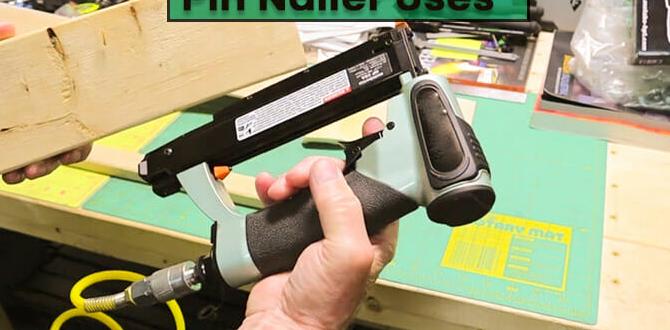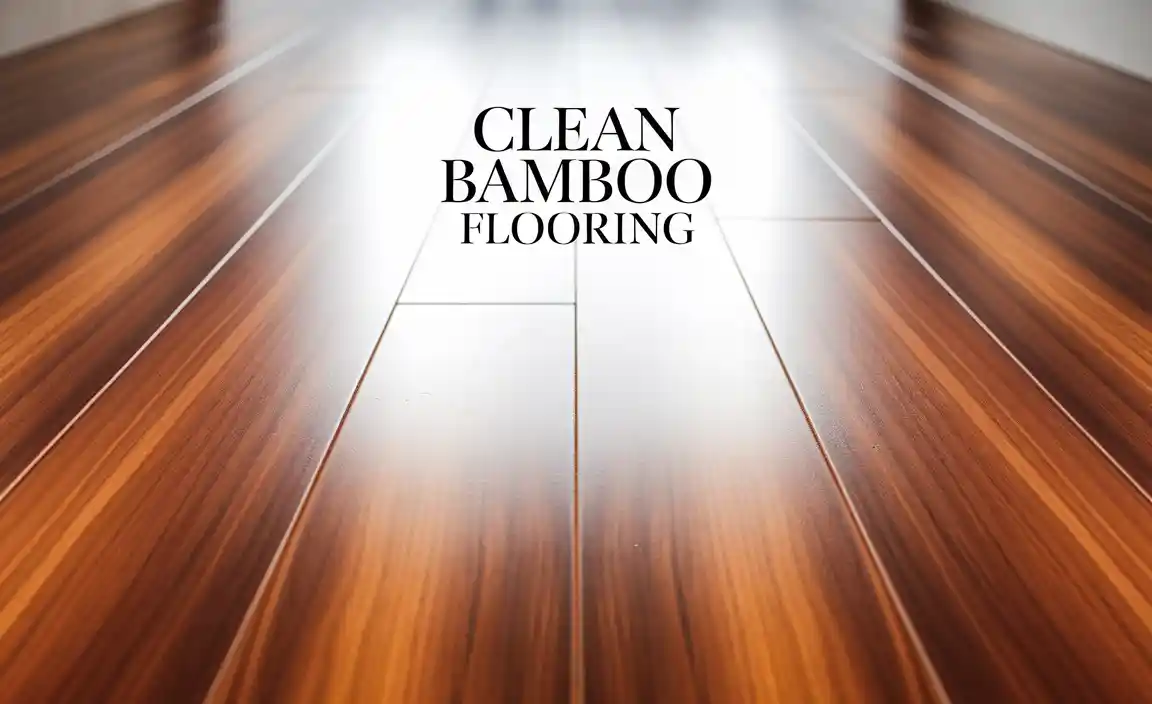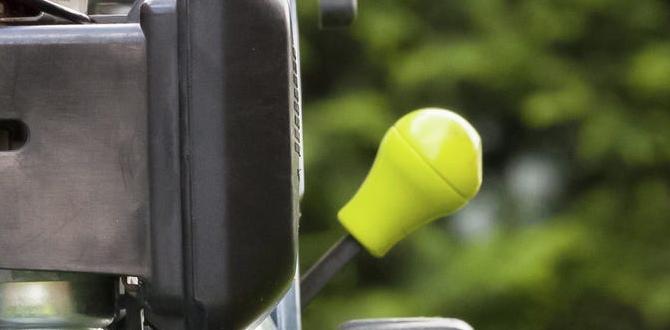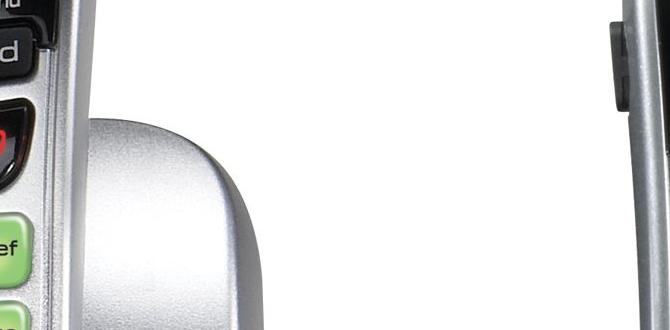Have you ever tried to put together a shelf and wished for an easier way? Imagine finishing your projects faster and with less mess. This is where a pin nailer comes into play. It’s a handy tool that helps you join pieces of wood without leaving big holes or tears behind.
Using a pin nailer can make your life easier in many ways. It’s perfect for small crafts, picture frames, or even furniture. Did you know that pin nailers use tiny nails called pins? These pins are so small they’re almost invisible once you put them in.
Next time you think about building something, remember the ease of a pin nailer. You’ll wonder how you ever worked without one!
Table of Contents
Creative Uses For A Pin Nailer In Your Projects

Uses for a Pin Nailer
A pin nailer is a handy tool for many projects. It drives small, thin nails into wood without splitting it. You can use it for delicate work like trim and moldings. This tool is perfect for attaching small pieces like picture frames or assembling furniture. Did you know that pin nailers can also help with crafting? They make quick work of joining tiny wooden pieces. Having a pin nailer in your toolkit opens up a world of creative possibilities.What is a Pin Nailer?
Definition and function of a pin nailer. Differences between pin nailers and other nail guns.A pin nailer is a special tool that fires tiny nails called pins into wood and other materials. It helps hold pieces together without big holes. Pin nailers differ from other nail guns because they use very small nails. This makes them great for delicate jobs. Here are some key points:
- Pin nailers use pins that are 23 gauge.
- Other nail guns use larger nails, which can cause splintering.
- Pin nailers create less visible holes, perfect for fine work.
This tool is ideal for tasks like attaching trim or making crafts. It keeps projects looking neat and tidy!
What is the use of a pin nailer?
Pin nailers are used to join materials easily. They are perfect for small, detailed projects. They make it quick to attach trim, moldings, and light frames. Their tiny holes are easy to cover, meaning less cleanup for you!
Advantages of Using a Pin Nailer
Benefits of using pin nails over screws and traditional nails. Speed and efficiency in project completion.Choosing pin nails can make your projects easier and faster. They are smaller and easier to use than screws and traditional nails. This helps you finish tasks quickly and neatly. Using a pin nailer means less waiting time and fewer mistakes. You can get many jobs done in a shorter time. Here are some benefits:
- Quick application
- Less wood splitting
- Stronger hold
- Cleaner finish
Why are pin nails better than screws?
Pin nails are smaller and easier to handle. They create fewer holes and are quicker to install.
Common Applications of a Pin Nailer
Best uses in woodworking and furniture making. Applications in home decor and crafting projects.Pin nailers are handy tools for various projects! In woodworking and furniture making, they are perfect for holding delicate pieces together. Imagine crafting a beautiful chair without worrying about ugly dents! Pin nailers use small nails that leave tiny holes, keeping your work neat. They also come in handy for home decor. Whether you’re creating picture frames or fixing wooden shelves, a pin nailer speeds things up. It’s like having a trusty sidekick ready to tackle DIY tasks!
| Application | Best Use |
|---|---|
| Woodworking | Joining small pieces |
| Furniture Making | Finishing edges |
| Home Decor | Hanging frames |
| Crafting | Creating detailed projects |
DIY Projects Perfect for a Pin Nailer
Creative furniture projects employing a pin nailer. Stepbystep guides for simple DIY crafts.If you’re ready to create amazing furniture, a pin nailer is your best buddy! Use it to craft small shelves or a cute toy box. It’s like having a superhero with a tiny cape! Start with these simple steps:
| Project | Steps |
|---|---|
| Toy Box | 1. Cut wood pieces. 2. Pin them together. 3. Sand and paint! |
| Small Shelf | 1. Measure and cut. 2. Nail the back. 3. Decorate! |
Creating things can be fun and easy, especially with a few pin nails! Remember, every great project starts with that first tiny nail. Who knew nails could bring so much joy? Now, let’s get building!
Tips for Using a Pin Nailer Effectively
Safety measures to consider while using a pin nailer. Techniques for achieving precise and clean nail placements.Using a pin nailer can feel like magic, but remember to stay safe! Always wear safety glasses to protect your peepers from flying bits. Keep your fingers clear of the nail zone—no one wants a nail boo-boo! For sharp nail placements, hold the tool firmly and take a deep breath. It helps to line up the pin with your mark. The table below summarizes some key tips:
| Safety Tip | Technique |
|---|---|
| Wear safety gloves | Align the nailer before firing |
| Keep the workspace clean | Use pressure wisely |
By following these tips, you can nail it—pun intended! Remember, practice makes perfect, and soon you’ll be mastering that pin nailer like a pro!
Maintenance and Care for Your Pin Nailer
Routine maintenance tips to extend tool life. Troubleshooting common pin nailer issues.Caring for your pin nailer is like giving it a spa day! Regular check-ups can help it last longer. Clean it after every project. Keep the nose clear of jams, or you might meet an unexpected nail monster! For small issues, check the air supply and ensure it’s not blocked. If you hear strange noises, it’s like your nailer is trying to sing; time to give it some TLC! Keep these tips handy:
| Maintenance Tips | Common Issues |
|---|---|
| Clean regularly | Nails don’t fire |
| Check for jams | Air leaks |
| Inspect hoses | Noisy operation |
Taking care of your pin nailer means it will be ready for your next adventure. Plus, nobody wants a moody tool that won’t cooperate!
Choosing the Right Pin Nailer for Your Needs
Key features to look for when selecting a pin nailer. Comparisons of popular pin nailer brands and models.Picking the perfect pin nailer is like shopping for shoes; you want something comfy and stylish! First off, look for battery life if you prefer cordless models. You don’t want to stop halfway through a project for a recharge! Also, check the firing speed – a faster rate can save you time and energy. Now, let’s discuss brands. Here’s a quick look:
| Brand | Features | Best For |
|---|---|---|
| DeWalt | Durability, Cordless | Heavy-duty tasks |
| Porter-Cable | Lightweight, Affordable | Beginners |
| Bostitch | Fast, Compact | Professional use |
With this info, you’ll be zipping through your next project like a superhero with a secret weapon! Choose wisely, and don’t forget to have fun while nailing it!
Conclusion
In conclusion, a pin nailer is a handy tool for various projects. You can use it for woodwork, crafts, and furniture assembly. It leaves tiny holes, so you won’t need much filler. Always practice safety and try different projects. For more ideas, explore resources online or ask a friend. Get your pin nailer ready and start creating!FAQs
What Are The Primary Applications Of A Pin Nailer In Woodworking And Construction Projects?A pin nailer is a tool used in woodworking and construction. You can use it to attach small pieces of wood without making big holes. It is great for finishing touches, like securing trims and moldings. We also use it for crafts, like building models or making furniture. With a pin nailer, your projects look neat and strong!
How Does A Pin Nailer Differ From Other Types Of Nail Guns, Such As Finish Nailers And Brad Nailers?A pin nailer uses tiny nails called pin nails. These nails are very thin, so they leave small holes. In contrast, finish nailers use thicker nails for stronger hold. Brad nailers use slightly thicker nails than pin nailers but are thinner than finish nailers. This makes pin nailers great for delicate work, while the others are better for tougher projects.
What Materials Can Be Effectively Joined Using A Pin Nailer, And Are There Any Limitations To Consider?You can use a pin nailer to join thin pieces of wood, like trim or molding. It works well for delicate projects, like small crafts. However, it isn’t great for heavy or thick materials. Make sure the wood is not too hard, or the nails may not hold well.
What Are The Advantages Of Using Pin Nails Over Traditional Nails Or Screws For Specific Tasks?Pin nails are really tiny, so they make small holes. This means we don’t have to fill them in later. They are also often stronger for holding wood together, which is great for thin pieces. Plus, you can use them without needing to pre-drill holes, which saves time. Overall, pin nails help you build things faster and with less mess!
How Can A Pin Nailer Be Used In Home Diy Projects, And What Tips Should Beginners Keep In Mind?You can use a pin nailer for small projects, like making picture frames or fixing furniture. It pushes tiny nails into wood to hold things together. When you’re just starting out, make sure to practice on scrap wood first. Always keep your fingers away from the end of the tool. Lastly, wear safety glasses to protect your eyes.






